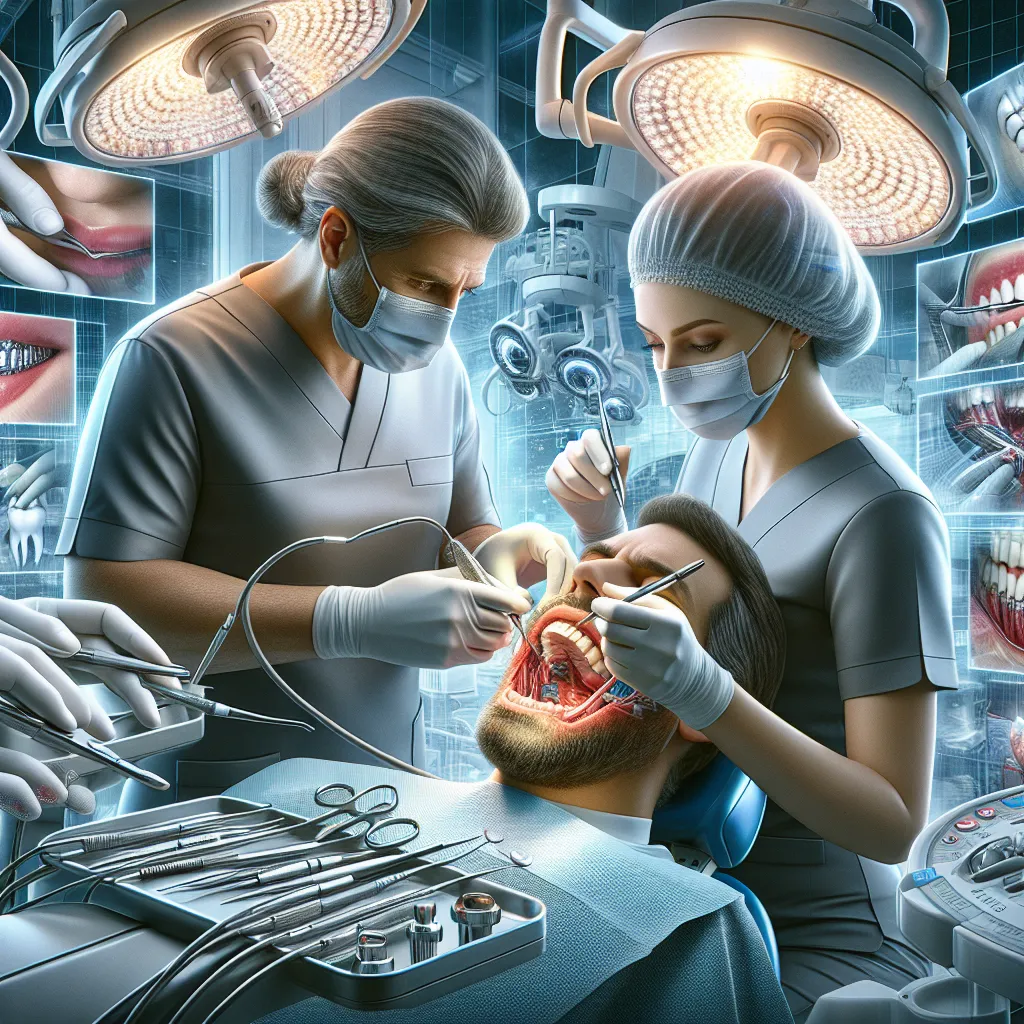
Advanced Techniques in Oral Surgery Procedures for Complex Dental Issues
Exploring the latest advancements in oral surgery, this blog post delves into advanced techniques used to address complex dental issues. From innovative bone grafting methods to precision tools for jaw reconstruction and minimally invasive nerve repositioning, oral surgeons are employing cutting-edge strategies to enhance patient outcomes.
Innovative Approaches for Bone Grafting in Oral Surgery
When it comes to addressing bone loss in oral surgery, innovative approaches have revolutionized the field, providing cutting-edge solutions for complex cases. These groundbreaking techniques have paved the way for enhanced patient outcomes and improved quality of life. Let’s delve into some of the most exciting advancements in bone grafting procedures.
1. 3D Printing Technology: Redefining Precision
With the advent of 3D printing technology, oral surgeons can now create custom-designed bone grafts with unparalleled precision. By using detailed scans of the patient’s jaw, advanced software can generate exact replicas, ensuring a seamless fit and optimal integration. This tailored approach minimizes surgical risks, reduces recovery time, and enhances overall success rates.
2. Growth Factors and Bioactive Materials: Stimulating Regeneration
By harnessing the power of growth factors and bioactive materials, oral surgeons can stimulate natural bone regeneration processes. These innovative substances promote the body’s healing mechanisms, accelerating new tissue growth and enhancing the strength of the grafted area. This biological boost not only speeds up recovery but also leads to more robust and long-lasting results.
3. Minimally Invasive Techniques: Maximizing Efficiency
Minimally invasive approaches have revolutionized bone grafting procedures, offering patients quicker recovery times and reduced post-operative discomfort. Through tiny incisions and advanced tools, oral surgeons can access the treatment site with precision, minimizing trauma to surrounding tissues. This streamlined process not only speeds up healing but also enhances overall patient comfort.
4. Virtual Surgical Planning: Enhancing Precision
Virtual surgical planning techniques allow oral surgeons to meticulously plan and simulate the bone grafting procedure before even stepping into the operating room. By using sophisticated software and 3D imaging, surgeons can map out the surgery, anticipate potential challenges, and optimize the treatment approach. This high-tech preparation ensures greater accuracy, efficiency, and ultimately, better patient outcomes.
Precision Tools and Technology in Jaw Reconstruction Procedures
In the world of oral and maxillofacial surgery, the advancement of precision tools and technology has revolutionized jaw reconstruction procedures, ensuring better outcomes for patients with complex oral health issues.
1. 3D Imaging and Virtual Surgical Planning
One of the key technologies shaping modern jaw reconstruction surgeries is the utilization of 3D imaging and virtual surgical planning. By creating detailed, customized models of the patient’s jaw and surrounding structures, surgeons can meticulously plan the procedure with unprecedented accuracy.
2. Intraoral Scanners and Digital Impressions
Gone are the days of messy, uncomfortable traditional dental impressions. With the advent of intraoral scanners and digital impressions, obtaining precise measurements of the jaw for reconstruction has become a seamless and efficient process. This technology also allows for more comfortable experiences for patients.
3. Robotics in Surgical Procedures
The integration of robotics in jaw reconstruction surgeries has elevated the precision and safety of these procedures to new heights. Robots can assist surgeons in performing complex tasks with enhanced dexterity and control, leading to improved surgical outcomes and reduced risks for patients.
4. Platelet-Rich Plasma (PRP) Therapy
PRP therapy has emerged as a valuable tool in promoting tissue regeneration and accelerating the healing process in jaw reconstruction surgeries. By utilizing the patient’s own concentrated platelets, surgeons can enhance the body’s natural ability to heal, leading to faster recovery times and reduced complications.
5. Navigation Systems for Surgical Guidance
Navigation systems provide real-time, intraoperative guidance for surgeons during jaw reconstruction procedures, allowing for precise implant placement and alignment. This technology enhances surgical accuracy and is particularly beneficial in complex cases that require intricate adjustments.
Minimally Invasive Techniques for Nerve Repositioning in Oral Surgery
Oral surgery is a field where precision and care are paramount, especially when it comes to delicate procedures like nerve repositioning. Minimally invasive techniques have revolutionized how such procedures are approached, offering patients a safer and more comfortable experience.
1. Benefits of Minimally Invasive Approaches
One of the primary advantages of using minimally invasive techniques for nerve repositioning in oral surgery is the reduced risk of complications. By making smaller incisions and using advanced tools, surgeons can access the target area with greater accuracy and minimal tissue disruption.
2. Advanced Imaging Technology
In recent years, the integration of advanced imaging technology like 3D cone beam CT scans has allowed oral surgeons to plan nerve repositioning procedures with unparalleled precision. This technology provides detailed 3D images of the patient’s anatomy, enabling the surgeon to create a customized treatment plan tailored to the individual’s unique structure.
3. Nerve Identification and Protection
Minimally invasive techniques also focus on nerve identification and protection throughout the surgery. Using specialized instruments and intraoperative monitoring, surgeons can locate and reposition nerves with minimal trauma, reducing the risk of nerve damage and post-operative complications.
4. Enhanced Patient Experience
Patients undergoing nerve repositioning surgery benefit greatly from minimally invasive approaches in terms of recovery time and post-operative discomfort. Smaller incisions result in less pain, swelling, and scarring, allowing individuals to return to their daily activities sooner and with improved overall satisfaction.
5. Future Directions in Minimally Invasive Oral Surgery
The continuous advancements in technology and techniques are shaping the future of minimally invasive oral surgery. From robotic-assisted procedures to targeted drug delivery systems, the field is evolving rapidly to offer patients safer, more efficient, and more effective treatment options.